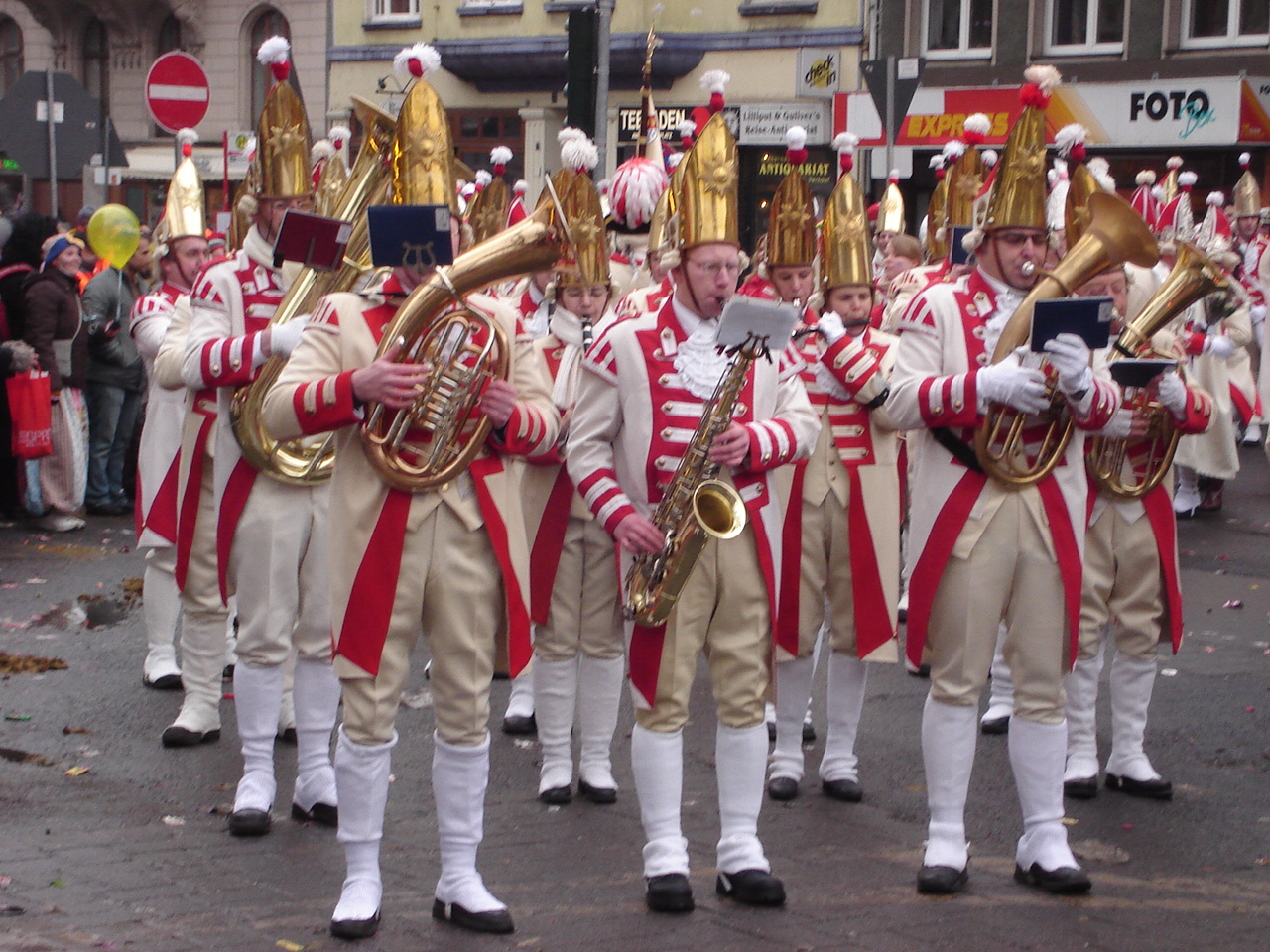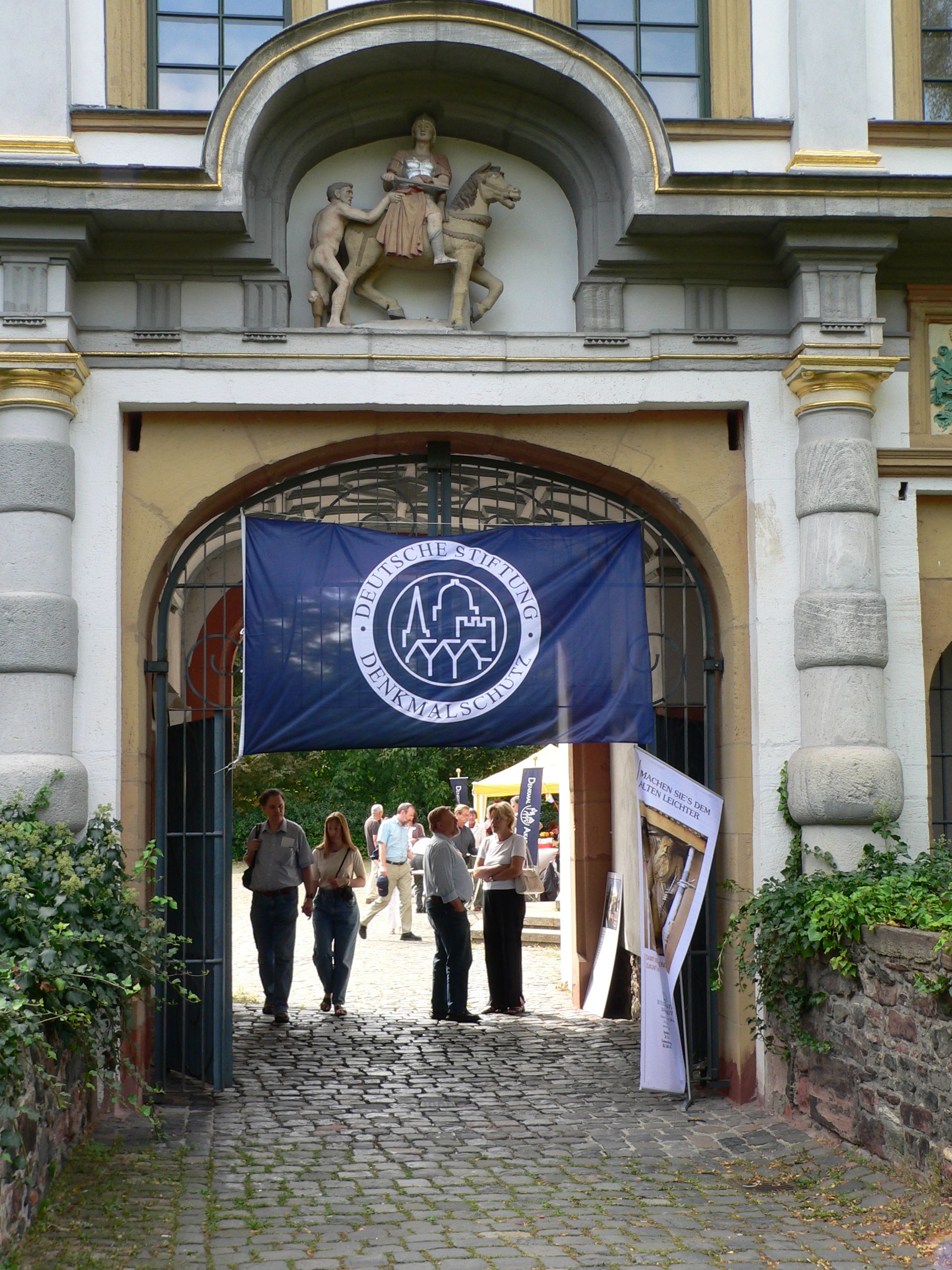|
Rathaus-Glockenspiel
The Rathaus-Glockenspiel is a large mechanical clock located in Marienplatz Square, in the heart of Munich, Germany. Famous for its life-size characters, the clock twice daily re-enacts scenes from Munich's history. First is the story of the marriage of Duke Wilhelm V to Renata of Lorraine in 1568, followed by the story of the Schäfflerstanz, also known as the coopers' dance. History The clock, with 43 bells and 32 life-size figures, was added during the completion of the Neues Rathaus (New Town Hall) in 1908. Every day at 11 a.m. and 12 p.m. (as well as 5 p.m. from March to October) the clock re-enacts two stories from Munich’s history from the 16th century, taking about 15 minutes. The top half of the Glockenspiel tells the story of the marriage of the local Duke Wilhelm V (who also founded the noted Hofbräuhaus) to Renata of Lorraine (Renate von Lothringen). In honor of the happy couple, there is a joust with life-sized knights on horseback representing Bavaria (in w ... [...More Info...] [...Related Items...] OR: [Wikipedia] [Google] [Baidu] |
Munich
Munich is the capital and most populous city of Bavaria, Germany. As of 30 November 2024, its population was 1,604,384, making it the third-largest city in Germany after Berlin and Hamburg. Munich is the largest city in Germany that is not a state of its own. It ranks as the 11th-largest city in the European Union. The metropolitan area has around 3 million inhabitants, and the broader Munich Metropolitan Region is home to about 6.2 million people. It is the List of EU metropolitan regions by GDP#2021 ranking of top four German metropolitan regions, third largest metropolitan region by GDP in the European Union. Munich is located on the river Isar north of the Alps. It is the seat of the Upper Bavaria, Upper Bavarian administrative region. With 4,500 people per km2, Munich is Germany's most densely populated municipality. It is also the second-largest city in the Bavarian language, Bavarian dialect area after Vienna. The first record of Munich dates to 1158. The city ha ... [...More Info...] [...Related Items...] OR: [Wikipedia] [Google] [Baidu] |
Marienplatz
Marienplatz (English language, English: Mary's Square, i.e. St. Mary, Blessed Virgin Mary, Our Lady's Square) is a town square, central square in the city centre of Munich, Germany. It has been the city's main square since 1158. History During the Middle Ages, markets and tournaments were held in the Marienplatz, which was originally called ''Markth'' ("market"), ''Schranne'' ("grain trade, grain market") and later ''Schrannenplatz'' ("grain market square"). After the grain market was moved into the modern glass-and-iroSchrannenear "Blumenstrasse" in 1853, the square received its new name, starting 9 October 1854. File:Der Marckt zu München 1656 (Marienplatz) - Matthäus Merian d.J.jpg, View of the New Town Hall (Munich), New Town Hall and Frauenkirche, Munich, Frauenkirche looking westward, 1656 File:München Schrannenplatz Soeltl 1838.jpg, View of the square towards the west from an 1838 print File:Anton Doll Der Marienplatz in München 1853.jpg, View of the square towards t ... [...More Info...] [...Related Items...] OR: [Wikipedia] [Google] [Baidu] |
William V, Duke Of Bavaria
William V (29 September 1548 – 7 February 1626), called ''the Pious'', (German: ''Wilhelm V., der Fromme, Herzog von Bayern'') was the duke of Bavaria from 1579 to 1597. Education and early life William V was born in Landshut, the son of Albert V and Archduchess Anna of Austria. He received a Jesuit education and showed keen attachment to the Jesuit Counter Reformation tenets. His title 'the Pious' was given to him because he devoted his daily routine to Masses (when possible, several times a day), prayer, contemplation, and devotional reading. He took part in public devotions, processions, and pilgrimages. William V's residence as crown prince was the ancient fortified Wittelsbach seat Trausnitz Castle, which he renovated extensively between 1568 and 1578. His projects, including the construction of an arcaded inner court, changed the Gothic castle into a Renaissance palace complex. Reign Like his Wittelsbach father and grandfather, William V was a strong supporte ... [...More Info...] [...Related Items...] OR: [Wikipedia] [Google] [Baidu] |
Renata Of Lorraine
Renata of Lorraine (, ; 20 April 1544 – 22 May 1602) was a noblewoman of the House of Lorraine who became a Duchess of Bavaria by her marriage to Duke William V. Early life Born in Nancy, Renata was the second child and eldest daughter of Francis I, Duke of Lorraine and Christina of Denmark. Renata was described as a beauty and a desirable match. In 1558, after the death of his first wife Prince William of Orange expressed a desire to marry Renata. Her mother, Christina, liked the idea, and it was further cemented after the Treaty of Cateau-Cambrésis. This match was however prevented by King Philip of Spain. Christina declined the plan of Cardinal of Lorraine to arrange a marriage between Renata and the prince of Joinville, and also a match proposed by the Spanish king to marry Renata to Juan d'Austria. In 1561, Renata's mother planned to marry her to king Frederick II of Denmark. However, the outbreak of the Nordic Seven Years' War between Denmark and Sweden in 1563 ... [...More Info...] [...Related Items...] OR: [Wikipedia] [Google] [Baidu] |
Schäfflertanz
The Coopers' Dance () is a guild dance of cooper (profession), coopers originally started in Munich. Since early 1800s the custom spread via journeyman, journeymen and it is now a common tradition over the Old Bavaria region. The dance was supposed to be held every seven years."Gründungsmythos der Schäffler: So wahr wie die offiziellen Abgaswerte der Autoindustrie" ''Sueddeutsche Zeitung'' ("Cooper's founding myth: As true as the official emissions values of the automotive industry"), February 19, 2017 History Early documented cases of are dated by 1702 when the Münich magistrate approved the performance of the dance as a well-established tr ...[...More Info...] [...Related Items...] OR: [Wikipedia] [Google] [Baidu] |
Bavaria
Bavaria, officially the Free State of Bavaria, is a States of Germany, state in the southeast of Germany. With an area of , it is the list of German states by area, largest German state by land area, comprising approximately 1/5 of the total land area of Germany, and with over 13.08 million inhabitants, it is the list of German states by population, second most populous German state, behind only North Rhine-Westphalia; however, due to its large land area, its population density is list of German states by population density, below the German average. Major cities include Munich (its capital and List of cities in Bavaria by population, largest city, which is also the list of cities in Germany by population, third largest city in Germany), Nuremberg, and Augsburg. The history of Bavaria includes its earliest settlement by Iron Age Celts, Celtic tribes, followed by the conquests of the Roman Empire in the 1st century BC, when the territory was incorporated into the provinces of Ra ... [...More Info...] [...Related Items...] OR: [Wikipedia] [Google] [Baidu] |
Knight
A knight is a person granted an honorary title of a knighthood by a head of state (including the pope) or representative for service to the monarch, the church, or the country, especially in a military capacity. The concept of a knighthood may have been inspired by the ancient Greek '' hippeis'' (ἱππεῖς) and Roman ''equites''. In the Early Middle Ages in Western Christian Europe, knighthoods were conferred upon mounted warriors. During the High Middle Ages, a knighthood was considered a class of petty nobility. By the Late Middle Ages, the rank had become associated with the ideals of chivalry, a code of conduct for the perfect courtly Christian warrior. Often, a knight was a vassal who served as an elite fighter or a bodyguard for a lord, with payment in the form of land holdings. The lords trusted the knights, who were skilled in battle on horseback. In the Middle Ages, a knighthood was closely linked with horsemanship (and especially the joust) from its orig ... [...More Info...] [...Related Items...] OR: [Wikipedia] [Google] [Baidu] |
Cooper (profession)
A cooper is a craftsman who produces wooden casks, barrels, vats, buckets, tubs, troughs, and other similar containers from timber staves that were usually heated or steamed to make them pliable. Journeymen coopers also traditionally made wooden implements, such as rakes and wooden-bladed shovels. In addition to wood, other materials, such as iron, were used in the manufacturing process. The trade is the origin of the surname Cooper. Etymology The word "cooper" is derived from Middle Dutch or Middle Low German ''kūper'' 'cooper' from ''kūpe'' 'cask', in turn from Latin ''cupa'' 'tun, barrel'. The word was adopted in England as an occupational surname, Cooper. The art and skill of ''coopering'' refers to the manufacture of wooden casks, or barrels. The facility in which casks are made is referred to as a cooperage. History Traditionally, a cooper is someone who makes wooden, staved vessels, held together with wooden or metal hoops and possessing flat ends or he ... [...More Info...] [...Related Items...] OR: [Wikipedia] [Google] [Baidu] |
Fasching
A variety of customs and traditions are associated with Carnival celebrations in the German-speaking countries of Germany, Switzerland and Austria. They can vary considerably from country to country, but also from one small region to another. This is reflected in the various names given to these festivities occurring before Lent. Names In parts of eastern and southern Germany,and in parts of Lower Saxony, as well as in Austria, the carnival is called . In Franconia and Baden-Württemberg as well as some other parts of Germany, the carnival is called , or ; in Switzerland, . While Germany's carnival traditions are mostly celebrated in the predominantly Roman Catholic southern and western parts of the country, the Protestant north traditionally knows a festival under the Low Saxon names , and (also spelled , ). This name has been imported to Denmark as and is related to ''Vastenoavond'' in the Low-Saxon-speaking parts of the Netherlands. It is traditionally connected with ... [...More Info...] [...Related Items...] OR: [Wikipedia] [Google] [Baidu] |
Deutsche Stiftung Denkmalschutz
The ''Deutsche Stiftung Denkmalschutz'' ("German Foundation for Monument Protection") is a German private initiative founded in 1985 that works for the preservation of cultural heritage in Germany and to promote the idea of cultural heritage management. Background Since 1900, when Georg Dehio published his ''Handbook of German Art Heritage'', Germany has not had a central list of National Heritage Sites. Each of the sixteen states keeps its own set of lists and many towns and cities keep their own lists, all based on varying criteria for inclusion. Monument protection Denkmalschutz works to coordinate efforts, promote public awareness, and also to act as a central contact for worldwide organizations such as UNESCO World Heritage. They also organize and fund the European Heritage Days in Germany, which are called Tag des offenen Denkmals. This "open monument day" has been held yearly with a different theme since 1993 on the second Sunday of September. For example, in 2011 ... [...More Info...] [...Related Items...] OR: [Wikipedia] [Google] [Baidu] |




